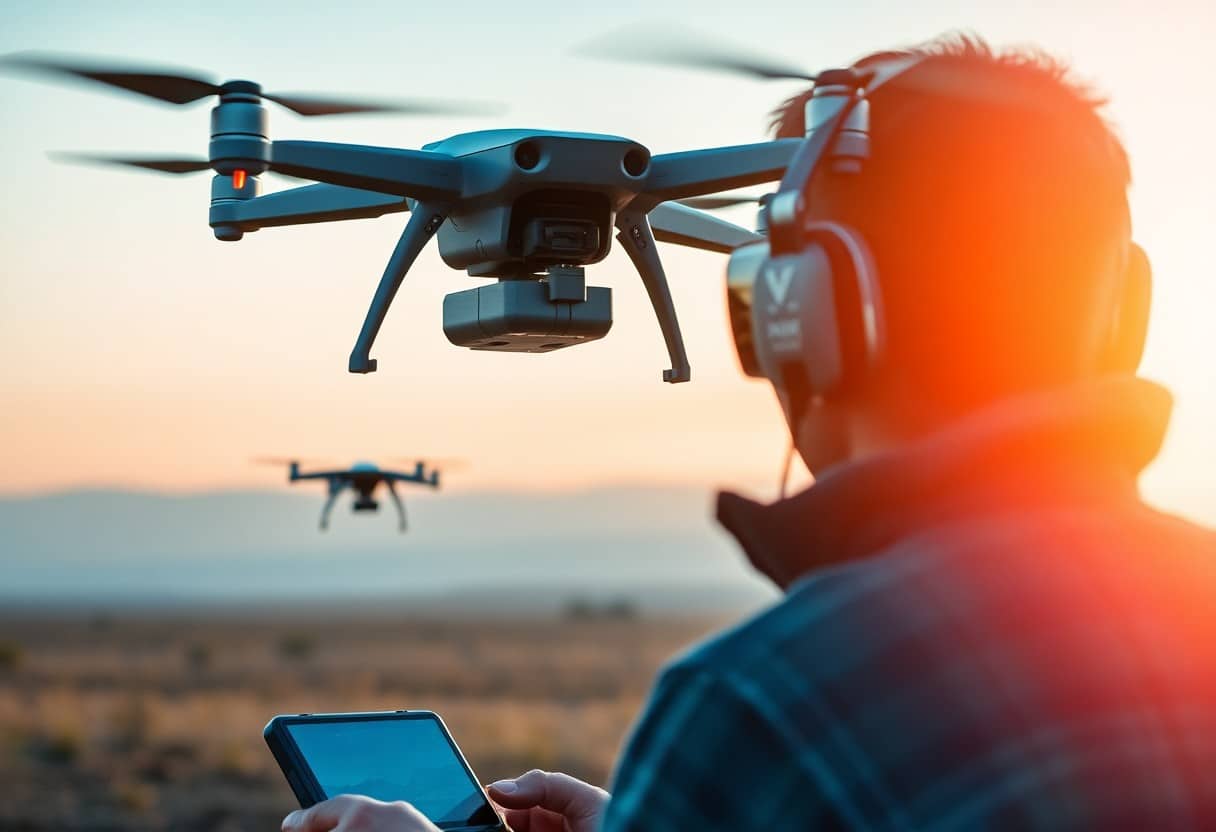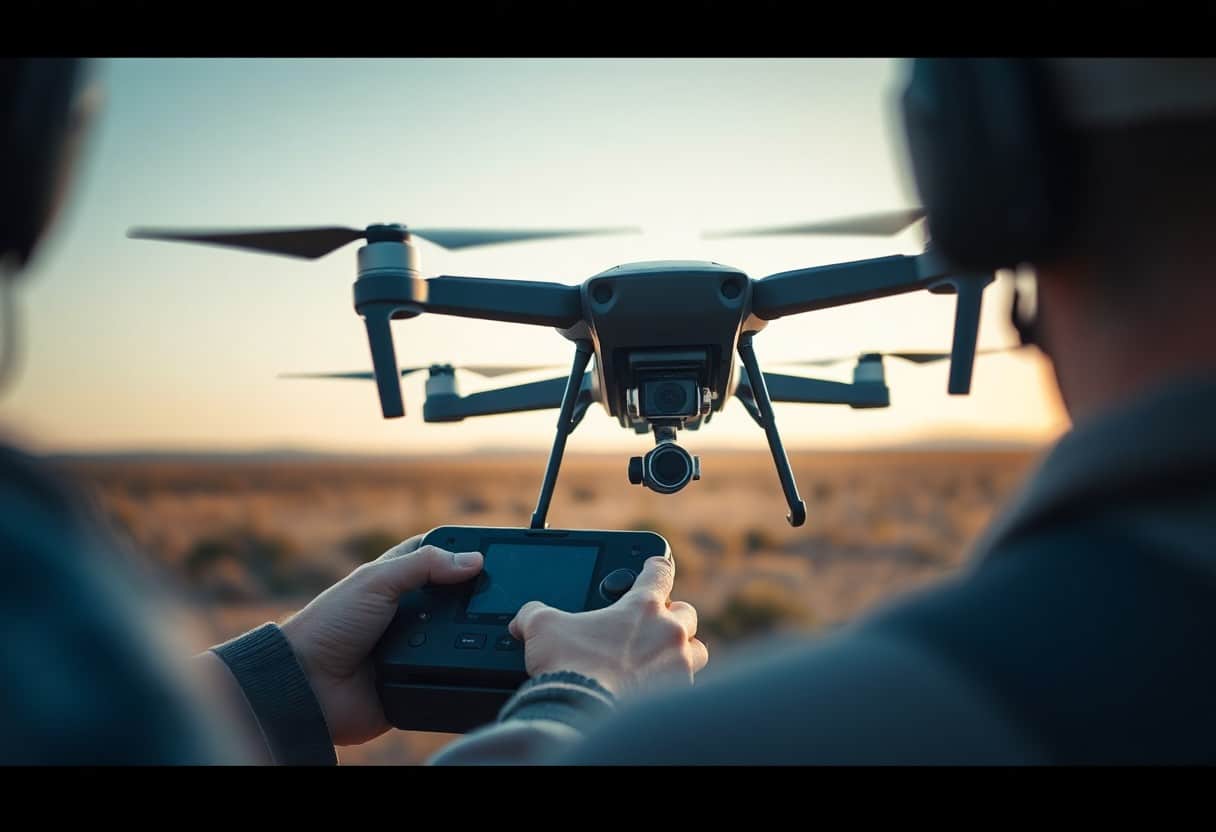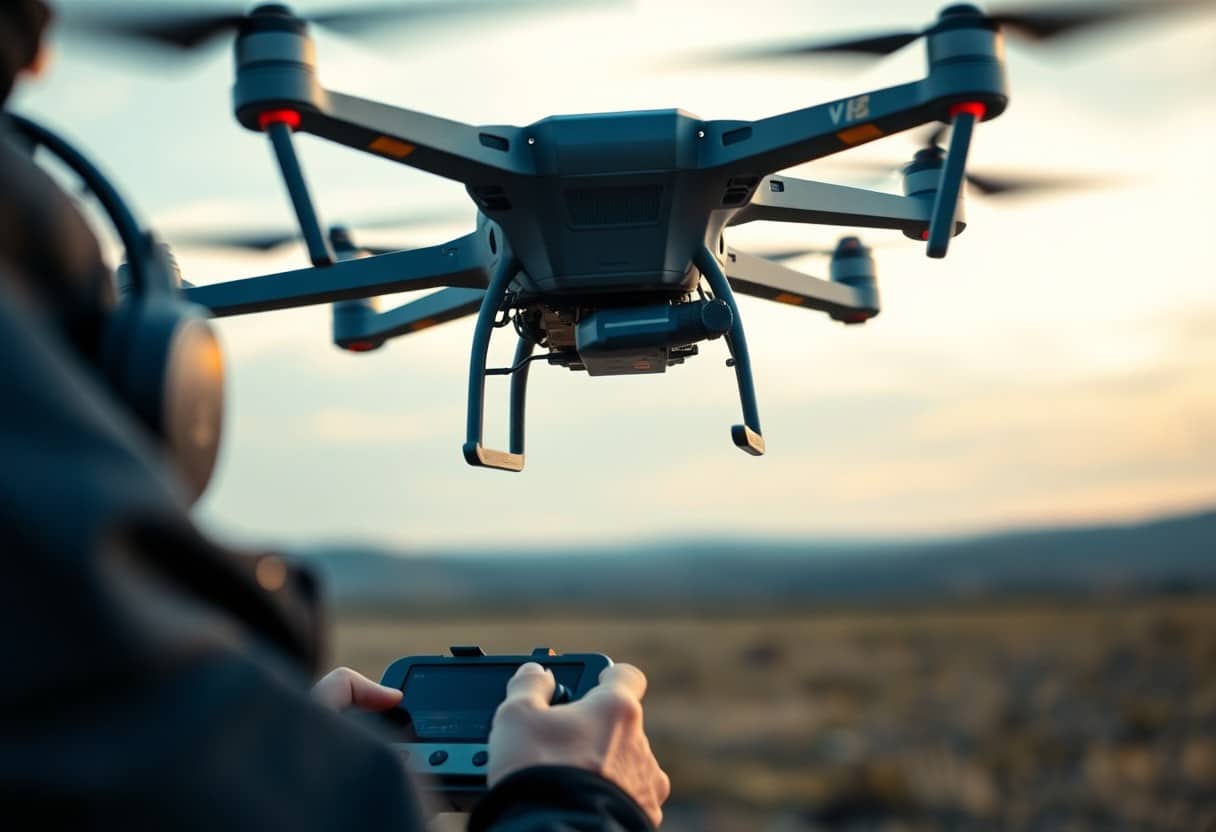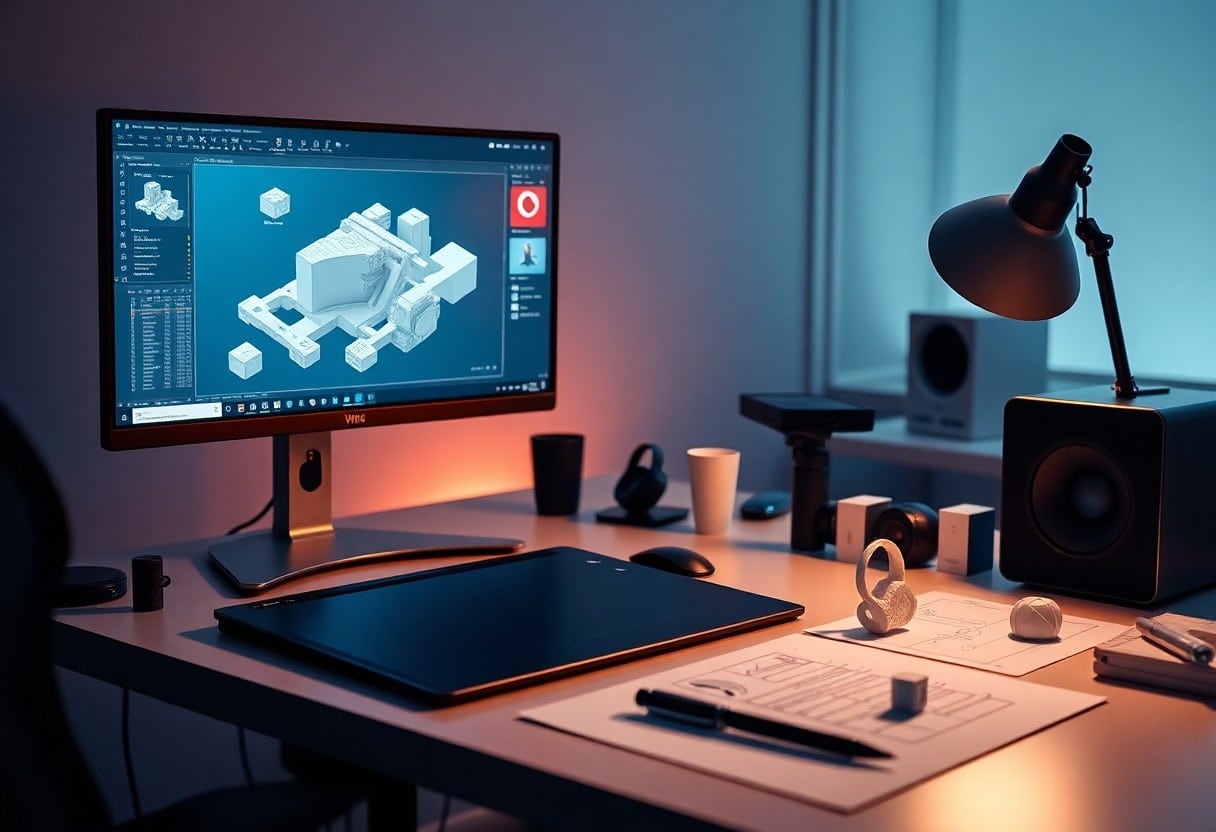Mastering Drone Controls - 7 Steps to Improve Flying Skills
When operating a Unmanned Aerial Vehicle (UAV), it's important to have control skills. Do you want to improve your flying skills and make your maneuvers more precise? In this article, we will shareSeven Key StepsThese methods will help you enhance your flying skills, whether you are a beginner or an experienced controller. These methods will not only boost your confidence, but also ensure that yoursuretyThe newest addition to your flight experience is a new way to make your flying experience smoother. Ready to improve your drone flying skills?
Summary of key points:
- Familiarize yourself with the controller:Gain an in-depth understanding of the controller layout and functions of the drone to enhance operational efficiency.
- Basic flying skills:Master basic takeoff, hover and landing techniques to build a solid foundation for flying.
- Hands-on:Practical flying on a regular basis builds confidence and skill through constant practice.
- Environmental Knowledge:Understand the effects of different environments (e.g. wind speed, weather) on flight and make appropriate adjustments.
- Agile Response:Develop quick reaction capability to respond to unexpected or unstable flight conditions.
- Visual Awareness:Strengthen the sense of spatial orientation and master the movement of the drone in different directions.
- Security Awareness:Always follow safety guidelines to ensure the safety of yourself and others.
Understand the basic principles of drone control
In mastering the art of drone control, you'll need an in-depth understanding of the fundamentals of control, including flight modes, joystick functions, and their effect on drone behavior. This basic knowledge will not only help you make smooth flights, but will also provide a solid foundation for further skill development.
Components of the drone control system
The control system of a drone usually consists of several key components, mainly flight controllers, transmitters and receivers. These components not only ensure flight stability, but also enable real-time communication with the operator in the field. Understanding what these components do and how they work will help you gain control of your entire system.
The Importance of Controlling Proficiency
Control proficiency is critical to the operation of the drone. If you are not proficient, you will be exposed to potentialSafety hazardsThis may even cause the drone to go out of control or crash causingProperty Damage or Personal InjuryThe airplane is a very safe place to fly. Therefore, improving your proficiency at the controls is essential to ensure safe flight.
Increased control proficiency has a direct impact on drone performance and operational safety. When you have stable control ability, you will be able to respond more flexibly to different flying environments and unexpected situations.This reduces the likelihood of accidentsThe control of the airplane is a very important part of your flying experience. In addition, good control skills will boost your self-confidence and enable you to excel when exploring more complex flying missions.

Step 1: Familiarize yourself with your drone
Before you begin flying a drone, you must have a basic understanding of it. This includes familiarizing yourself with the controls, flight modes, and features of the drone. By referring to resources such asUnleash Creativity - 10 Essential Steps to Mastering 3D Modeling SoftwareYou can be sure to acquire all the necessary knowledge to fly your drone safely and efficiently.
Pre-flight inspection.
Before each flight, conductPre-flight inspection.It is important to ensure the safety of your drone. You need to check the battery level, propellers are securely mounted and connections are working properly to preventDangerous accidentsThe
Understanding Your Drone Manual
Read moreDrone ManualIt is an important step before you fly. The manual contains valuable information on operation, maintenance and troubleshooting to help you master the functions of your drone and how to deal with problems when they occur.
The drone manual not only describes the basic operations, but also details the specific uses of the various functions. ByUnderstanding the Information in the HandbookYou'll gain a comprehensive understanding of the drone's capabilities and learn how to use it when encounteringEmergencyHow quickly you respond is critical to protecting your investment and ensuring safe flights.
Step 2: Mastering the Control Lever
While maneuvering the drone.The control stick is very critical to operateYou need to familiarize yourself with the functions of each club and understand how to use them properly in different situations. You need to familiarize yourself with the functions of each stick and understand how to use them correctly in different situations. This not only improves your control accuracy, but also increases your confidence in flying, making you more comfortable in the air.
Fine Motor Skills Development
DevelopmentFine Motion SkillsThe control of your drone is of paramount importance. With regular practice and focus, you can improve your hand-eye coordination, which will directly affect the performance of your drone. Fine-tuning your movements will help you control the flight path and altitude.
Control Precision Practice Exercise
In order to increase the precision of your controlIt's important to do targeted exercises.. These exercises should include different flight modes and challenge you to maintain control in changing environments. Through repetitive practice, you will be able to adapt to situations faster and become more sensitive to the joystick.
Specific control accuracy exercises may includeDrawing aerial graphics,Precision Suspensionup toFine MotionThese exercises will not only improve your maneuvering accuracy, they will also help you to improve your control. These exercises will not only improve your maneuvering accuracy, but will alsoAvoid accidents caused by careless operationThe following is an example of how to fly a drone. Whenever you complete an exercise, you should review your performance and conduct self-assessment, so you can gradually improve your skills and enjoy the fun of flying a drone.

Step 3: Training with the Simulator
Simulator training is an effective way to improve your drone flying skills. Using a simulator, you can safely practice a variety of flying techniques and scenarios to become more comfortable in the real world. If you need more help, you can refer to7 Key Steps to Airline Flight Approval - What You Need to KnowThe
Benefits of Flight Simulators
Using a flight simulator allows you to refine your skills in a risk-free environment and provides real-time feedback. In this way, you can quickly adjust and improve your maneuvering skills while avoiding real-world drone damage or accidents.
Recommended Simulator Software
There are many excellent simulator software options available on the market, such asDRONE simrespond in singingRealFlightThese software programs offer a realistic physics engine and a variety of environmental simulations to help you improve your flying skills. These programs offer a realistic physics engine and multiple environment simulations to help you improve your flying skills.
When selecting a simulator, theEnsure a true control responseAnd with a variety of missions to fly, you'll be better prepared for the challenges of the real world. DRONE simA variety of viewpoints and scenarios are provided so that you can review and analyze your flight performance at any time.Ideal for novice and experienced pilots alike.. In addition.RealFlightInteraction and competition with other users are also provided to increase the fun and challenge of training.

Step 4: Learn Basic Flying Techniques
In improving your drone flying skills, it's important to master basic flying techniques. You can do this by refining yourWhat You Should Know Before Seeking Airplane ApprovalThis will enhance your control and self-confidence. This will enable you to operate the drone in a variety of environments and cope with unexpected situations.
Suspension and Stability
Hovering is a key technique in drone flight. Maintaining a stable hover not only improves the quality of your shots, but also helps you react quickly when you encounter risks. You need to practice controlling the throttle and direction to achieve good stability under various wind conditions.
Basic Mobility and Navigation
Basic maneuvering and navigation skills are essential for safe flying. You should learn how to use the joystick properly and perform basic maneuvers. With practice, you'll be able to confidently maneuver your drone in complex environments and embark on more challenging missions.Forward, backward, left and right.
When performing basic maneuvers and navigation, pay attention to the followingSurroundingsand potential obstacles. Before each flight, perform aComprehensive inspectionTo ensure proper operation of the drone. Practice will help you become more familiar with the operation of the drone and help you to react quickly when faced with an emergency. These skills will not only improve your confidence in flying, but will also ensure that you are able to fly well in the event of an emergency. Stay safe in all airspaceThe process will be much smoother and more enjoyable once you have mastered these basic skills. Once you have mastered these basic skills, the entire flying process will become much smoother and more enjoyable.
Step 5: Practice in a Varied Environment
As you fly, you must learn to practice in a variety of weather conditions and environments. This will not only improve your maneuvering skills, but will also help you face possible challenges. Diverse ClimatesThings like rain, fog, or wind can affect the flight characteristics of your drone, so you'll need to hone these skills in real-world situations to enhance your ability to cope.
Suitable for windy weather
The drone's maneuvering inwind powerrespond in singingWeather ChangesThe effects of these factors can vary greatly. You should be fully aware of how to adjust your flight plan to account for these factors. Strong winds can affect the stability of the drone, and rainfall or low visibility can make visual navigation difficult, so knowing this will allow you to maintain maneuverability in any situation.
Understanding topographic impacts
It is important to understand how terrain affects drone flight. Terrain such as hills, trees or buildings can interfere with airflow, which in turn affects the stability and maneuverability of the drone. A careful study of the terrain before you fly will help you develop the strategies and planning necessary to react properly in rugged environments and reduce the risk of accidents. Knowing these elements will allow you to adjust to the characteristics of the terrain and maintain safe and consistent flight performance.
Mastering Drone Controls - 7 Steps to Improve Your Flying Skills
By learning and practicing these 7 steps, you can significantly improve your drone flying skills. Understanding the theory, mastering the basics, practicing simulations, challenging yourself, and continuing to learn the latest technology are the keys to becoming a better drone pilot. Remember, practice makes perfect, and it's only through constant practice and reflection that you'll be able to take to the skies and enjoy flying a drone.
Frequently Asked Questions
Q: What is Mastering Drone Controls - Seven Steps to Improve Your Flying Skills?
A: This is a guide focused on helping drone operators improve their flying skills. It covers seven key steps that will enable both beginners and experienced operators to fly their drone more effectively.
Q: Who is this guide for?
A: This guide is for anyone interested in drone operations, including beginners, hobbyists, and controllers who wish to improve their professional skills, regardless of their flying experience.
Q: What is the focus of each step?
A: Each step focuses on a specific flight skill or knowledge, such as basic control principles, understanding of the flight environment, risk management, and learning strategies for dealing with unexpected situations.
Q: Do I need any specific equipment to follow this guide?
A: While owning your own drone can be helpful, the contents of the guide are also suitable for readers who do not own a physical drone. The theory section will help readers enhance their understanding of drone flight.
Q: Can I fly professionally after learning these skills?
A: Although this guide can greatly improve your flying skills, it will take more practice and experience to fly professionally, and you may need to obtain the necessary licenses and registrations.
Q: Are there any recommended practices to strengthen my flying skills?
A: Yes, it is recommended to practice in an open airspace area and consider using a simulator to simulate different flight conditions, in addition to joining the local drone community to further improve your skills and get feedback.
Q: Are there any additional resources I can refer to if I am having trouble with my practice?
A: In addition to this guide, there are many instructional videos and forums on drone control available online, and consider attending a workshop or course for professional guidance and support.




